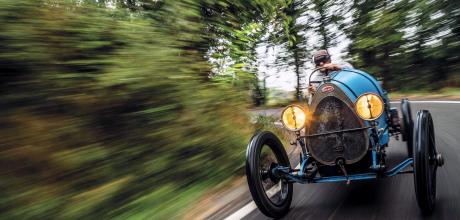1920 Bugatti Type 13-27 two-seater Yankee
Bugatti’s origins were in this tin voiturette, small in stature but gigantic in ambition. Massimo Delbo takes a trip back in time.
Photography Max Serra
BIRTH OF THE LEGENDS BUGATTI TYPE 13
Driving the car that began the Bugatti legend
Just 8000 cars. More or less the total output of Bugatti between 1909 and 1947. A small number, but enough to propel the name to legendary status forever. Ettore Arco Isidoro Bugatti was born in Milan, Italy, in 1881 and established himself as an innovator when he was just 20 by showing his own version of a Prinetti & Stucchi at the Milan Mostra dello Sport show. It got him a job at De Dietrich & Cie, based in Alsace, then part of the German empire. There, Bugatti gained experience and discovered that tax discounts were available to promote investment in new enterprises. And so it was that in 1909 he began manufacturing cars under his name, even though he was by then chief engineer at Deutz Gasmotoren Fabrik in Cologne. He chose the Alsace town of Molsheim for his headquarters.

Apart from his one-off prototype Type 12, the first model manufactured in Molsheim was the Type 13, officially presented to the market on 21 August 1910. A party was held there to celebrate the completion of both the workshop and the first Bugatti chassis. The Type 13 became successful, with around 2500 manufactured up to 1926, including the various Type 15, 17, 22 and 23 derivatives, with revised chassis, different wheelbase lengths and engine capacities. It was the perfect representation of Ettore Bugatti s idea for a small, light sports car, and the results, both on the racetrack and in sales, proved him right.
‘BECAUSE OF ITS RACING TRIUMPH THERE, THE BRESCIA EPITHET WAS ATTACHED TO THE TYPE 13 FOR EVER MORE’
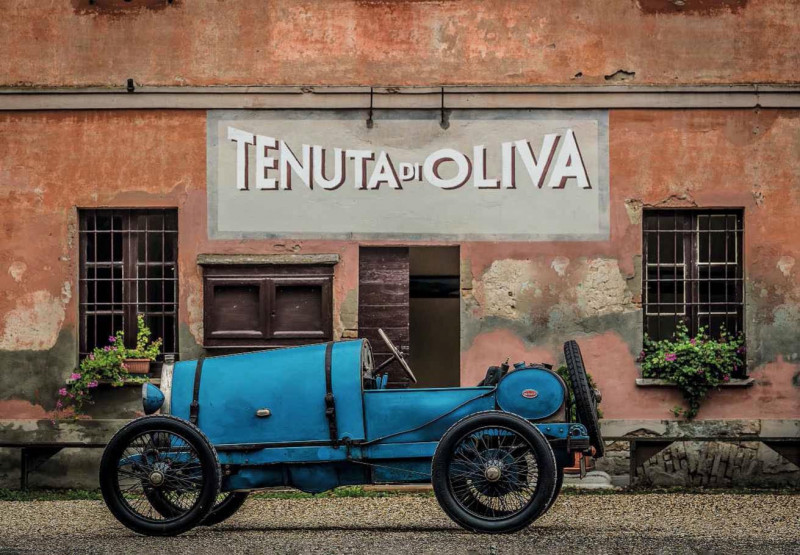
His voiturette was equipped with a 1368cc four-cylinder engine, soon increased to 1453cc. The First World War interrupted production, which began again in late 1919 — though Alsace had become French territory in the meantime. The following year, with the factory still being revamped with new tooling, Bugatti entered four Type 13s (powered by a new 1496cc engine with — remarkably — four valves per cylinder and roller-bearing conrods) in the VIII International Coupe des Voiturettes of Le Mans on 29 August. The team was made up of Pierre de Vizcaya, Michele Baccoli, Fernand de Vizcaya and Ernest Friderich; it was the first time Bugattis had been painted in French Racing Blue, and they won the race, with Friderich achieving a 91.96km/h average.
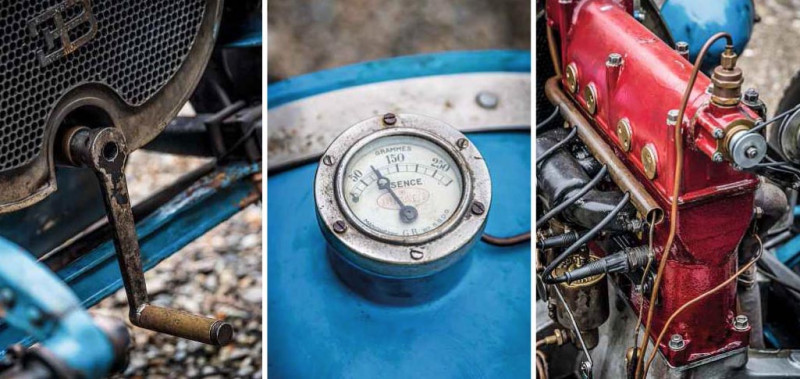
In 1921 they did the same, finishing 1 -2-3-4 at September’s Brescia Week in Italy. These cars were upgraded with different front dampers, the slightly larger engine with twin magnetos and two spark plugs per cylinder, and Smm-thick chassis construction. Because of this racing triumph, the Brescia epithet was attached to the Type 13 for ever more.
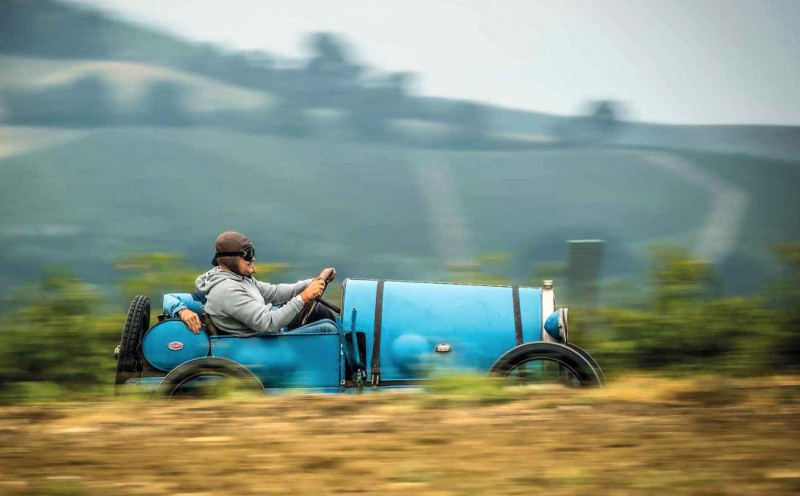
'This was the very moment that put Bugatti on the map,’ says Italian collector Franco Maj no, long-term Bugatti devotee and owner of this 1920 Bugatti Type 13-27, chassis no.950. Majno started collecting cars in London while studying English during the summer of 1979, aged only 17.
He fell in love with a 1947 Jaguar MkIV. ‘I was imprinted on by Jaguar thanks to my grandfather’s 3.4, still in the family today. I used to travel in it as a child. In London, in spare time from the bartender job I had, I would walk around the Kensington mews where old car dealers had their shops. One day at Gerry Porters I spotted the Jaguar and, once back in Italy, I convinced my older brother Aldo of the absolute need for us to have it. Before the end of the year we were back in London and bought the MkIV and five further Jaguars, with the aim of reselling them in Italy to pay for the MkIV’
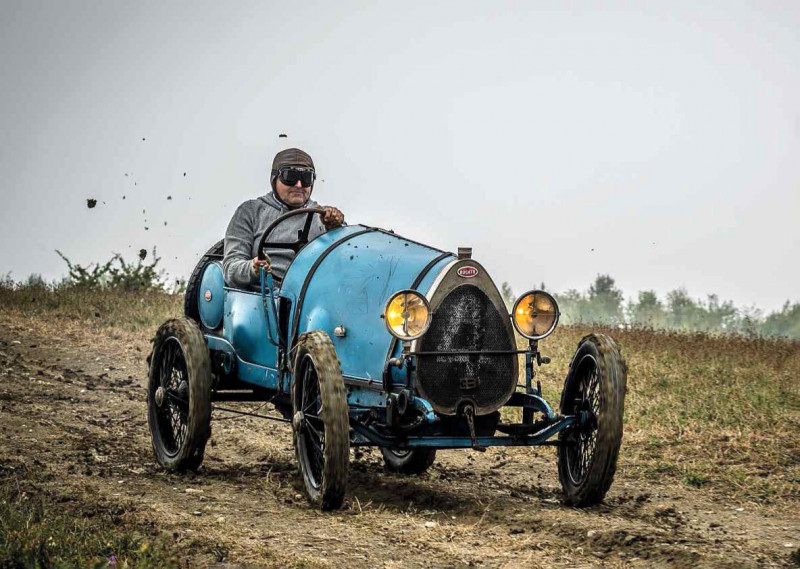
In time the Majnos ended up keeping some of them, including an early XK120, a ISOS and the MkIV, which was sold several years later to Koelliker, then the importer and distributor of Jaguar and Rover for the Italian market. The dreamt-of Bugatti became part of the Majno family in 1994, first registered to Aldo and more recently to Franco.
Chassis no.950, with a 16-valve cylinder head (engine no.524) was ordered in December 1919 and delivered the following August, when it was driven to Paris. As always with Bugatti, especially the very early ones, it is very difficult to have evidence for everything, but with this car we have been quite lucky because it has always been on the radar and has been studied over several decades by the prominent Bugatti historians Norbert Steinhauser, David Sewell and Pierre Laugier,’ says Franco.
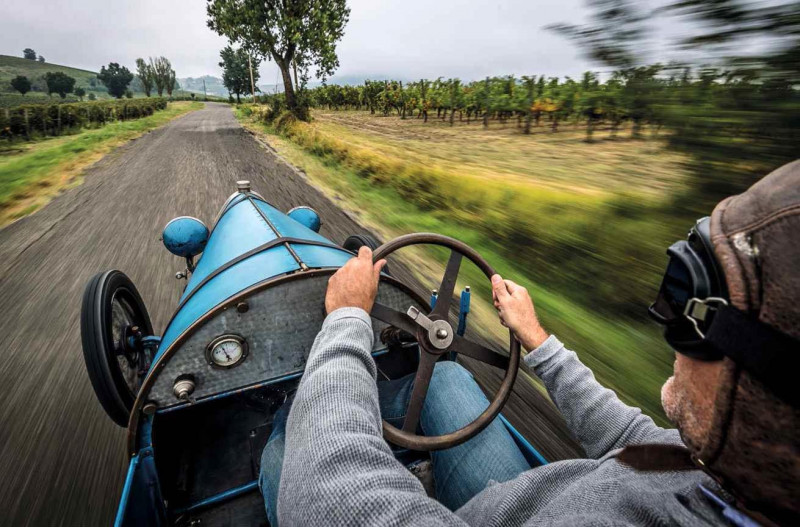
He continues: ‘The reason for their attention is because it is believed to be one of the very first 16-valve Type 13s, possibly even the prototype, from which the “Brescia” model would originate.’
Indeed, the wheelbase of this car is 1950mm, as in the 8-valve cars, 50mm shorter than other 16-valves, which means the chassis, of 4mm steel instead of the Brescia’s 5mm, could have been of pre-war manufacture. The engine, still the original unit, has a rounded block, of the type first developed by Bugatti while preparing his 16-valve engine in the pre-war years, before manufacturing them from 1920 in the now-typical rectangular shape. There are rumours of a series of 16-valve engines that had been manufactured and were ready for use just before the war, and which were then buried in the factory’s garden. These engines had the rounded block and this unit could easily be one of them.
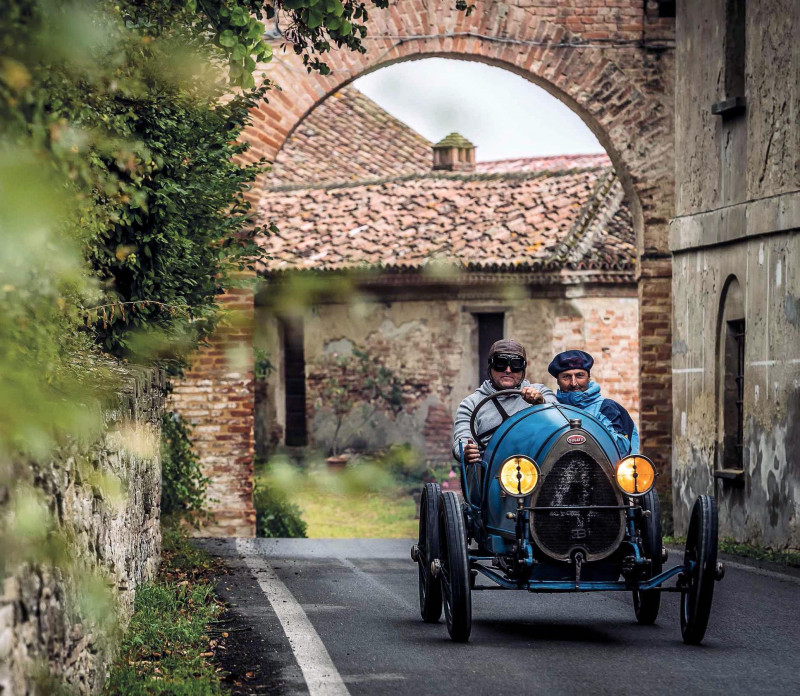
Then there is the unusual two-seater Yankee body, most likely created by the local Durr coachbuilder: today it is the only car thus-bodied known to exist. It is believed that only two were manufactured, the second being no.651, as usually Yankees are three-seater cars on a 2000mm wheelbase, and there aren’t pictures of similar cars to use as reference.
Further interest comes from the delivery date and the first owner. ‘The car was driven to Paris already equipped with its body, a practice usually reserved for works cars,’ says Franco. Taking delivery was Etienne Bunau-Varilla, born in 1890, the son of Philippe Bunau-Varilla, aviation enthusiast and the engineer in charge of building the Panama Canal. Etienne was holder of only the 16th French flying licence issued, and was interested in aerodynamics. In 1913 he helped racing cyclist Marcel Berthet to break speed records by fitting his bicycle with a long-tailed lightweight aerodynamic shell. He was also the owner of the Societe de Vente des Automobiles Bugatti, the Paris company’s distributor on the Avenue des Champs Elysees, where works driver Pierre de Vizcaya was in charge of sales. Sadly, no sales records named the car’s first private owner but in 1920 Bugatti manufactured four Type 13s, and four of them were at Le Mans for the August race.
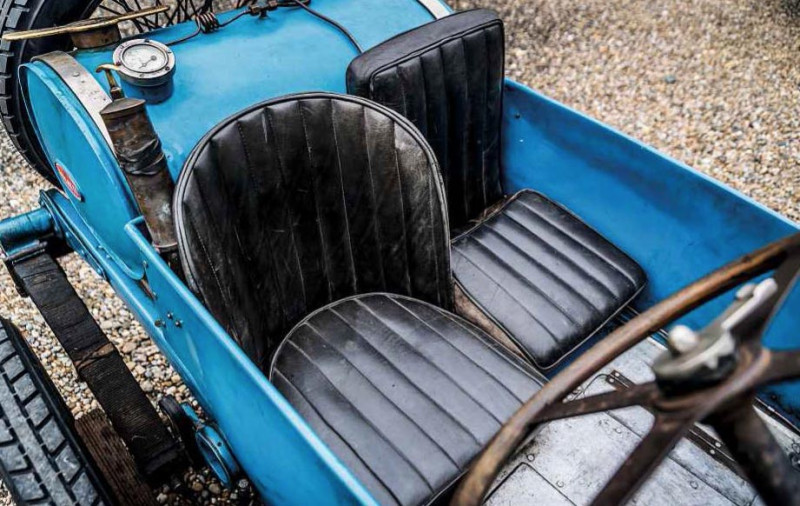
‘I would love to have the smoking gun proving that my Type 13 was one of the cars raced at Le Mans in 1920,’ says Franco, ‘but it has never surfaced. We are quite sure of it, as all the clues are there, but what we can definitely say is that, if the car was not actually one of the four, it was manufactured as if it was. One of the four Le Mans cars was chassis no.923, which is lost but for its gearbox and some other small bits, so this would be the only survivor.’
Chassis no.950 was sold in 1921 to Carlos Pflucker of Nice. He in turn sold it in 1922 to Roger de Falguiere, also in Nice. The next known registration number record for it is 4879 DR 3, issued by the Tulle authority in the Correze region in 1948. It was then re-registered 4307 EG 5, issued by the Perigueux authority to Andre Delcombel of Thenon, who may have simply moved home from the Correze to the adjacent Dordogne region. There may have been one or more further owners before collector and trader Paul Sac of Marseille acquired it in 1962.
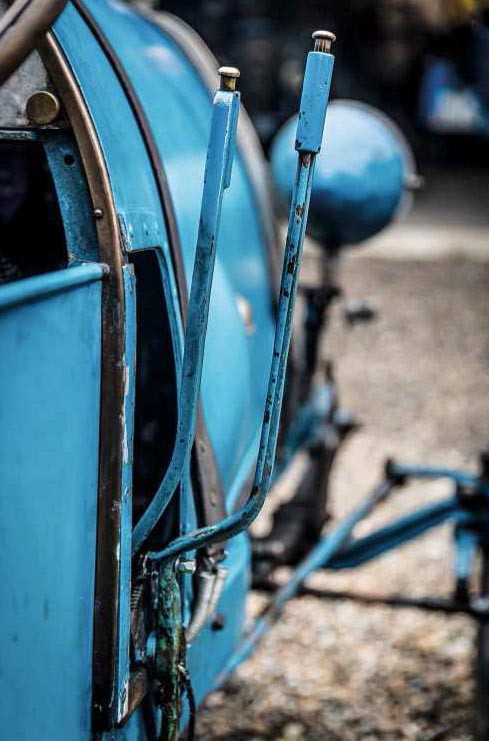
‘We do not know when the car lost its original body, but we know it spent the Second World War in Nice and that, from 1962, the car has always been known,’ says Franco. ‘We also know that, when it was bought by Paul Sac, it had the body of a pre-war Simca, looking like an Austin Seven.’ In 1963 the Type 13, without a body, arrived in Italy, bought by Gian Luigi Saccardo, president of the Registro Italiano Bugatti. He restored the car to resemble a 1920 Le Mans Type 13, using an original fuel tank.
In 1988, Saccardo sold the car to a Mr Braccaioli of Reggio Emilia, a local collector who commissioned a full restoration from a local specialist, before going bankrupt. The car, dismantled to single components, was then seized by the bank, which kept all the parts in underground storage.
‘During those days, my brother and I were looking for a pre-war sports car, a racing Bugatti before the Type 35 era,’ remembers Franco. ‘One November evening, I was at dinner with a friend, the collector, Bugatti Club Italia president and FIVA president Francesco Guasti. The historian Adolfo Orsi had told him that there was a Type 13 dismantled in a bank underground. I still remember the drive in Guasti’s Opel Omega Lotus, in snowfall, to Reggio Emilia and how, as soon as I saw this incredible display of Bugatti parts, I fell in love. Calling it a car would be too much!
‘Unfortunately for me, the bank decided to sell it through an auction, and we had a strong opponent in another bidder, the Bugatti register founder and classic car collector Alberto Procovio, which forced the price to a very high sum. It was January 1994, and my brother became the formal owner of the parts composing Type 13 no.950. We moved all the parts to the Sandro Bergami workshop close to Pavia, and began the restoration and assembly project. Amazingly, 99.9% of the car was there, and in 1996 we drove it to the centennial of the 1916 Bugatti victory at Mont Ventoux.
‘Since then, without further major refurbishment, we have driven the car in five Mille Miglias and for about 40,000 kilometres, including the year 2000 Bugatti international meeting in New Zealand and, in 2020, Le Mans to celebrate 1920 success. Because of its simplicity, it is a reliable, low-maintenance car. When you set off, you know you will complete your journey.’
Franco lets me take the steering wheel and I can’t forget how hard I’d had to push my modern car to keep up with this ‘light blue bug’ along twisting country roads. As soon as I take off, I’m impressed by how quickly the old lady gains speed. It is not the power but the torque and the very low weight that are responsible for this magical effect. The chassis is by far the most flexible I have ever experienced, but it works well: instead of being rigid, it simply follows and adapts to every twist in the road. Everything is very easy — until you have to brake. Then, suddenly, the century that has passed since this thoroughbred was built becomes evident, as the (rear only!) drum brakes reach their limit.
The steering feels very direct and, despite the exposed driving position, you immediately feel comfortable and don’t get tired even after hours of driving. But you get dirty, especially on the slippery, muddy tracks that help you to better understand how it might have felt to drive the Type 13 on the best roads of its period. Piloting the Type 13 in this way is absolutely exhilarating, its tail slipping away in every direction as I, in the driving seat, work hard at the accelerator and steering wheel, trying to keep the nose pointing (more or less) straight ahead.
It certainly focuses your mind as you remember that this is one of very few (fewer than ten, in fact) ‘pre-Brescia’ Type 13s known to survive of about 34 made, including 8-valves. Equally, there are fewer than 20 Bugattis older than this one still in existence. And I can’t help but wonder whether Colin Chapman’s ‘just add lightness’ philosophy came after driving a Type 13.
Above and left
Muddy track helped Massimo understand how the Bugatti might have felt on the roads of a century ago; external gearlever and rear-wheels-only brake are a challenge.
Right and below
The term ‘voiturette’ seems entirely appropriate when you see the scale of this tiny car — Massimo is not a giant.
Above and facing page
This Bugatti is of a type that raced at Le Mans — and there's conjecture that it might even have been a team car; 1453cc, 16-valve engine was enormously advanced for its time.
TECHNICAL DATA FILE 1920 Bugatti Type 13-27 two-seater Yankee
- Engine 1453cc OHV four-cylinder, pushrod 16-valve, Zenith carburettor
- Max Power 36bhp @ 2750rpm
- Transmission Four-speed manual, rear-wheel drive
- Steering Worm and sector
- Suspension Front: beam axle, semi-elliptic leaf springs, friction dampers. Rear: live axle, quarter-elliptic leaf springs, friction dampers
- Brakes Drums, rear only; transmission brake
- Weight 450kg
- Top speed 78mph


